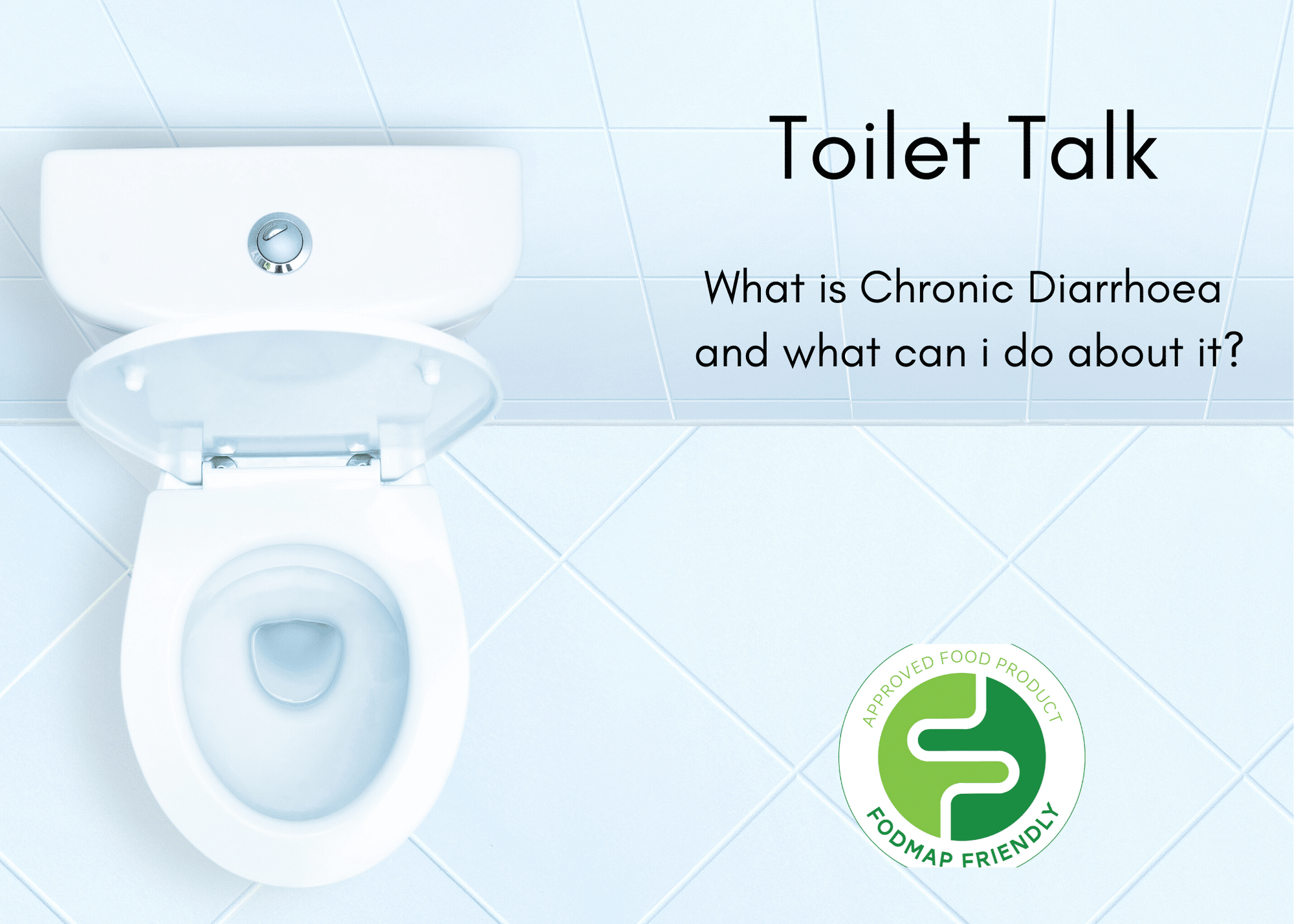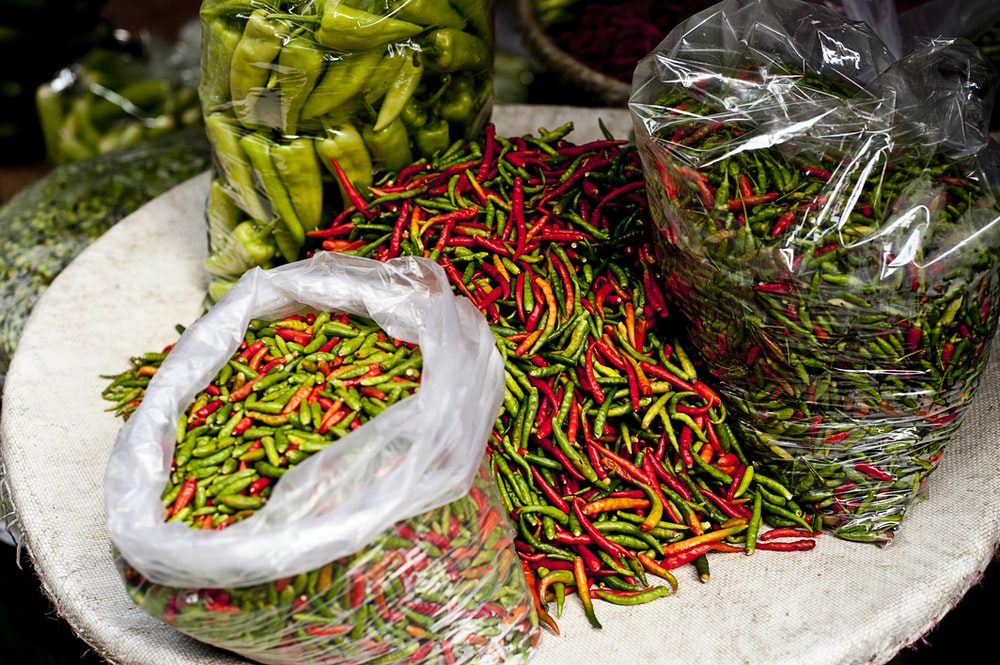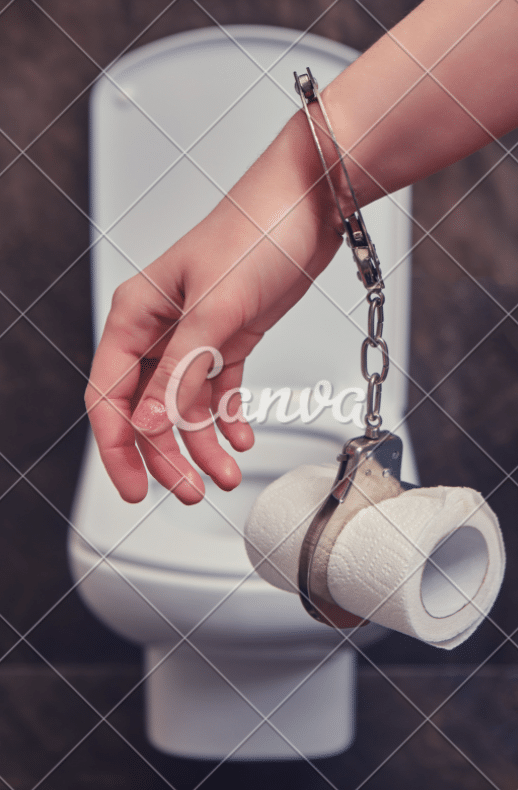Toilet talk: what is Chronic Diarrhoea and what can I do about it?
Posted on July 08, 2020

Have you ever had a meeting with the toilet that went longer than expected? Chances are, you have had diarrhoea at some point. Diarrhoea can have many causes, types and solutions – and today on the blog we are going to give a full rundown.
What is chronic diarrhoea?
The definition of diarrhoea varies, but is typically described as a loose, watery stool consistency that occurs more than three times in a single day. It can range in severity – from slightly watery faeces and brief abdominal pain to extremely watery faeces, cramps and a sense of urgency to defecate.
Acute diarrhoea that lasts less than a week typically results from infections such as food poisoning, however chronic diarrhoea is defined as lasting for more than four weeks and can be a sign of other problems.
Diarrhoea is one of the key symptoms associated with Irritable Bowel Syndrome (IBS). People with IBS typically have abdominal discomfort or pain associated with their bowel movements that is relieved by defecation and experience changes in stool form or frequency. IBS with diarrhoea is sometimes referred to as IBS-D.
What is happening in my body to cause diarrhoea?
There are many possible causes of diarrhoea, but we are going to expand on three of the most common physiological mechanisms – osmotic diarrhoea, secretory diarrhoea and decreased gut transit time.
The consistency of our faecal matter is greatly dependent on absorption of water in the intestines, which relies on adequate absorption of solutes. With osmotic diarrhoea, excessive amounts of solutes (the components of food you eat) are retained in your intestine which means water can’t be absorbed properly – resulting in diarrhoea. This can occur because we’ve ingested a poorly absorbed substrate (such as mannitol or sorbitol – two high FODMAP polyols), or because of malabsorption – usually from an inability to absorb certain carbohydrates.
A common example of malabsorption is in lactose intolerance resulting from deficiency of the lactase enzyme. In this case, a moderate quantity of lactose is consumed (such as a glass of milk), but the intestinal epithelium is deficient in the lactase enzyme, which means the lactose we just ate can’t be broken down into its constituents. The osmotically active lactose is retained in the intestine, where it ‘holds’ water. To make matters worse, the unabsorbed lactose passes into
the large intestine where it is fermented by colonic bacteria, resulting in gas production.

Another common type of diarrhoea is secretory diarrhoea. Large volumes of water are normally secreted into the small intestine, but majority of this water is absorbed before reaching the colon. Diarrhoea can also occur when secretion of water into the small intestine exceeds absorption. Secretory diarrhoea is typically resultant of a bacterial toxin being present but can also be caused by laxatives and medications.
Chronic diarrhoea can also be caused by a decreased gut transit time. Picture your digestive system as a conveyer belt at the airport. When the chief (your body) notices a quality control issue, the emergency fast track is activated. This overrides the usual controls and speeds everything currently making its way through the system right off the conveyer belt (in this case, to the toilet!). Once the fast track button is activated, the body starts to flush everything out of the digestive system – pushing food that you’ve recently eaten and anything else in the process of making its way through. The usual quality control point of re-absorbing water is bypassed, creating the watery stools typical of diarrhoea. This bypass can also be brought on post bowel resection. Unlike constipation where the transit time is increased and too much water is absorbed, not enough water is absorbed.
How do FODMAPs impact constipation?
In the small and large intestine, FODMAP molecules have an osmotic effect, meaning they draw more fluid into the bowel and can cause osmotic diarrhoea. These molecules are also rapidly fermented by colonic microflora, producing gas. Both the increase in fluid and gas production distends the bowel, which may cause the sensation of bloating and abdominal pain, affecting how the muscles in the wall of the bowel contract. These factors can affect transit time, meaning a faster or slower movement of food through the gut. Fast movement may result in diarrhoea, whereas slow movement can cause constipation.
What are the foods or diets that cause diarrhoea?
Too much fibre: We know that we need soluble, insoluble fibre and resistant starch to ‘keep things moving’ in the bowel department and prevent constipation. This is why a low fibre diet can cause constipation, as food is left to ferment in the bowel. More information about chronic constipation can be found here. In the same vein, eating too much fibre also promotes fermentation and gas formation, which makes bowel movements too big and bulky and they can be equally hard to pass or give you diarrhoea. This is why it is important to get our fibre intake at ‘just the right’ amount of 25-30g/day.
High fat foods: creamy and fried foods can be hard to digest. When fatty foods are not absorbed normally, they go to the colon, where they are broken down to fatty acids, causing the colon to secrete fluid and trigger osmotic diarrhoea.
Spicy foods: spicy seasoning is one of the most common sources of food-induced diarrhoea as it can irritate the stomach lining while it is digested. This irritation can cause gas, bloating, a burning sensation and diarrhoea in many cases as the body wants the out ‘out of there’ so gut transit time is decreased. Spicy sauces can also mask high fat content, especially in dishes such as curry.

Caffeine: caffeine is a stimulant and ‘speeds things along’ our digestive system by increasing the contractions that move the contents through the bowel, which can lead to diarrhoea and urgency to defecate.
Alcohol, particularly beer and wine may have a high FODMAP content that triggers osmotic diarrhoea. To add to this, the large intestine isn’t as good at reabsorbing water when alcohol is around which can cause loose stools. What’s more, if you drink alcohol and ingest fibrous and gassy foods at the same time (such as a kebab), you may experience a double hit of diarrhoea from the high fat content of the food and alcohol combined. To prevent alcohol-induced diarrhoea, consider drinking more slowly and eating before drinking – two measures that will slow the rate at which alcohol is absorbed in the body.
What are some of the non-food influences that can affect diarrhoea?
Medication: chronic diarrhoea can be an adverse side effect of multiple over the counter and prescription medications. These include antibiotics, antidepressants, antacids, laxatives and stool softeners.
Intense exercise: have you ever heard of ‘runners’ diarrhoea’? During intense exercise, such as running, blood flow to the intestines is diverted to the working muscles. Your digestive system is of a lower priority, which can lead to diarrhoea. The more you move, the more your intestines move. This increased movement will affect digestion because it speeds things along the digestive tract, resulting in an urgent need to defecate.
Stress: your brain and gut are inextricably connected. When you’re stressed, your gut may spasm. If the spasms are widespread, the whole colon contracts, moving everything along quickly to result in diarrhoea.
Hormones: females, have you noticed that your toilet habits may change before and during your period? There is an increase in hormones called prostaglandins that are released before your period. Think of prostaglandins as the ‘contraction’ hormone that can help the uterus shed its lining, but these contractions can also result in diarrhoea.
Food poisoning: foodborne illness is often the cause of acute diarrhoea that lasts less than a week.
What can I do to combat diarrhoea?

Consider the low FODMAP diet as it temporarily restricts intake of poorly absorbed fermentable carbohydrates causing gastrointestinal distress. However, the low FODMAP diet is not a diet you should embark on alone, as it involves restricting FODMAP containing foods which can be found in fruits and vegetables which are known to be healthy. It is important to work with a dietitian who will ensure you can meet your nutritional needs whilst also managing your diarrhoea.
Reduce gut irritants such as caffeine, spicy food and high fat foods. They may not be high FODMAP containing foods but could still be causing diarrhoea and restricting intake may help you combat this.
Increase soluble fibre intake: soluble fibre is good for both diarrhoea and constipation as it is the viscous fibre that can dissolve in water to form gels. Soluble fibre becomes ‘sticky’ when it gets wet – think about how soluble fibre rich oats form a gel when placed in liquid. Soluble fibre absorbs fluid which can help relieve diarrhoea and can be found in foods such as beans, oats, fruits and vegetables. Fibre supplements could also be useful for managing diarrhoea too.
Medications: anti-motility medicines can help slow down diarrhoea in the short-term, for example during travel. These include medications such as loperamide, diphenoxylate and atropine. However, medications are typically used to combat acute diarrhoea, not chronic diarrhoea.
Above all, seeing a doctor and dietitian for chronic diarrhoea is our key recommendation.
A prolonged bout of diarrhoea can cause the body to lose more fluid than it can take in, resulting in dehydration. Severe dehydration has serious complications, so it is always important to consult a medical professional.
In summary
Chronic diarrhoea is typically caused by not enough water being absorbed in the colon, leading to a decreased transit time which ‘emergency fast tracks’ digestive remnants through the body. Adequate fibre intake is important in preventing diarrhoea, as well as avoiding gut irritants such as high fat, spicy foods and caffeine. Diarrhoea can also be influenced by medication, intense exercise, stress and hormones particularly around your period. The low FODMAP diet may help get to the bottom of your chronic diarrhoea but should be completed after consultation with a doctor and dietitian to avoid dehydration.
Written by: Charlotte Barber (Student Nutritionist)
Reviewed by: Charmaine Duong










